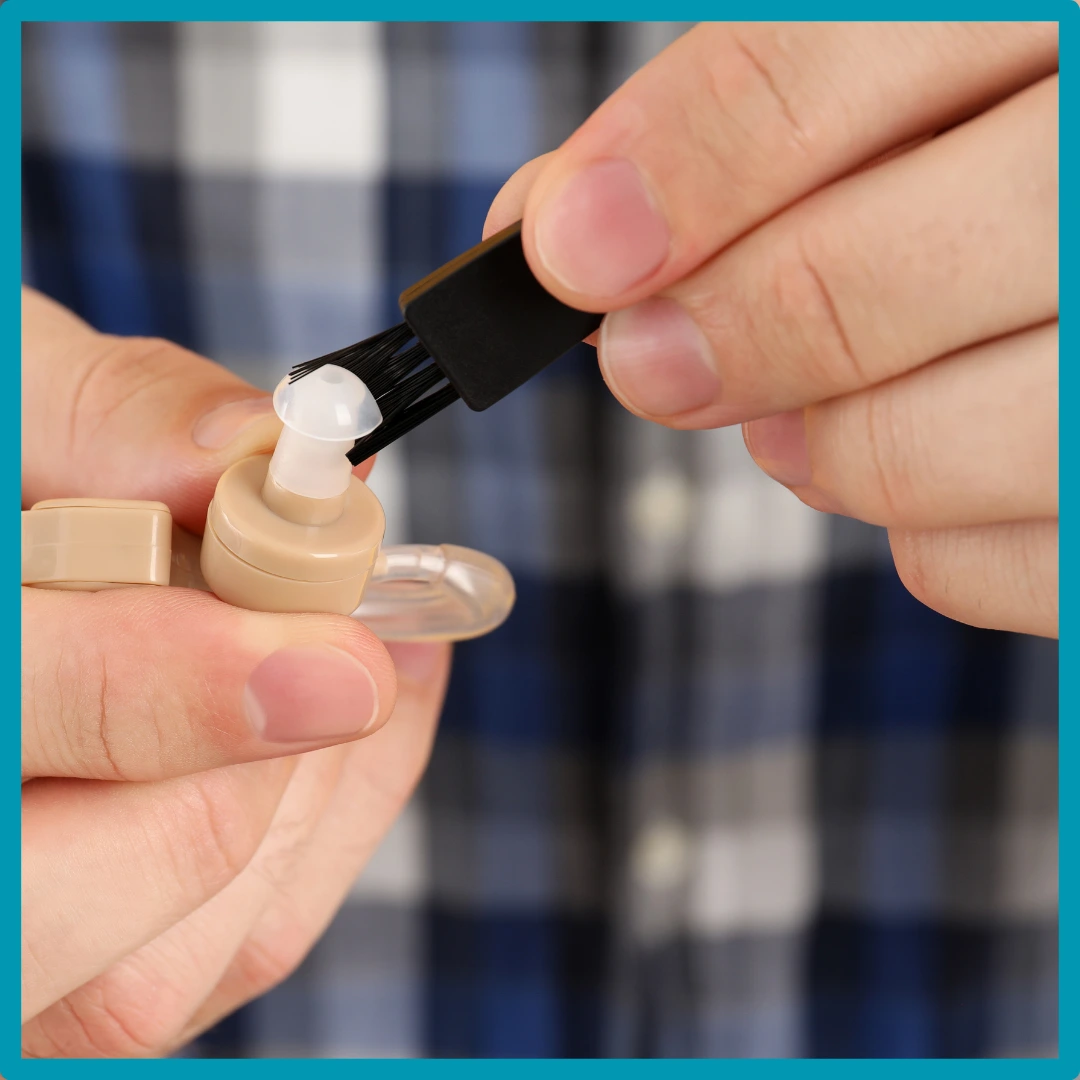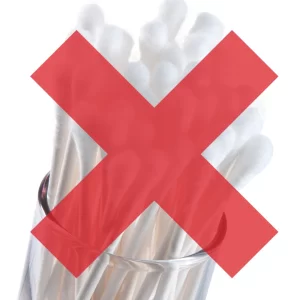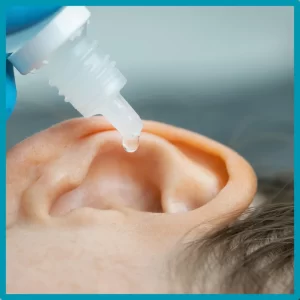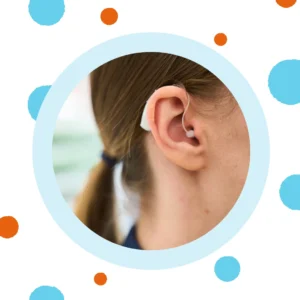
Hearing Aid App
Hearing Aid App: Your Key to Hearing Aid Success Your hearing aids came with an app. You downloaded it. Now what? Modern hearing aid apps
Home » Dealing with Earwax and Hearing Aid Problems: Best Practices for Clean Ears

Earwax: your ears’ natural superhero, defending against dirt and debris. But for hearing aid users, this sticky substance can quickly become a nemesis. Keeping your ears and hearing aids clean doesn’t have to feel like a battle. With the right tools and tips, you can avoid hearing aid problems – as well as hearing problems. Let’s dive into the sticky (pun intended) world of earwax and hearing aid care!
Table of Contents
ToggleEarwax, or cerumen, isn’t just an annoyance—it’s your ears’ way of saying, “I got this!” Here’s what it does:
For hearing aid users, however, this superhero can turn rogue. When earwax blocks sound, damages components, or causes feedback, it’s time to step in.
Hearing aids and earwax have a complicated relationship. On one hand, earwax protects your ears; on the other, it loves to sabotage your hearing aids. Here’s how:
Luckily, with the right care, you can keep these issues at bay.
Maintaining clean ears is a delicate balance. Overdo it, and you risk irritation or even more wax production. Underdo it, and, well, let’s just say things can get messy. Here’s how to get it just right:

Learn more about mixed hearing loss.

Clean ears not only make your hearing aids happy but also prevent infections and improve overall hearing clarity. Plus, you’ll avoid awkward moments when someone notices your “wax situation.”
Discover resolutions for hearing health.
Your hearing aids are like tiny robots working tirelessly to improve your hearing. Show them some love with these daily care tips:
Hearing aids are incredible devices, but they’re not immune to problems—especially when earwax gets involved. Here’s how to troubleshoot the most common issues.
Regular cleaning and prompt attention to issues can prevent most hearing aid problems. Think of it as preventive care for your tiny tech companions.
Myths about earwax and hearing aids are as common as “dad jokes.” Let’s bust some of the big ones!
Reality: Cotton swabs are wax’s best friend, pushing it deeper into your ear.
Reality: Earwax is like Goldilocks—it’s only bad if there’s too much or too little.
Reality: Hearing aids are wax magnets. Regular cleaning is non-negotiable.
Reality: Unless you moonlight as a hearing care provider, leave it to the pros.
Understanding the truth about earwax and hearing aids keeps your devices running smoothly and your ears safe. Plus, you’ll have fun debunking bad advice at parties!

Earwax doesn’t have to be your nemesis. With the proper care for your ears and hearing aids, you can enjoy crystal-clear hearing without the drama.
Ready to keep your hearing aids in top shape? Contact Injoy Hearing today for expert advice and solutions!

Hearing Aid App: Your Key to Hearing Aid Success Your hearing aids came with an app. You downloaded it. Now what? Modern hearing aid apps

Six distinct types of hearing aids exist today, each designed for different hearing loss levels and lifestyles. Choosing the wrong style means struggling with fit,

Your audiologist suggested two premium hearing aids. One looks like wireless earbuds. The other promises cutting-edge AI. Both cost thousands at clinics. Which one actually

You got a cochlear implant to hear better. Now your audiologist mentions adding a hearing aid to your other ear. Wait, what? Hearing aids compatible
Injoy specializes in crafting custom Phonak hearing aid solutions tailored to the unique hearing needs of our patients. With a team recognized as the best in the business and decades of experience in helping people nationwide, we’re dedicated to improving your hearing and, consequently, enhancing your quality of life.
To start your journey towards better hearing with confidence, Injoy is proud to offer a 30-day risk-free hearing aid trial. This allows you to experience the difference our Phonak hearing aids can make, ensuring they meet your expectations and fit your lifestyle perfectly.
Improve your hearing and improve your life today by contacting Injoy to learn more! Call (844) 914-3331.

Need hearing aids? Explore our range of hearing aids and discover the best option for your lifestyle and Unique Hearing Needs.
Are you a current patient with us? We're here to help with any adjustments, repairs, or support you may need.